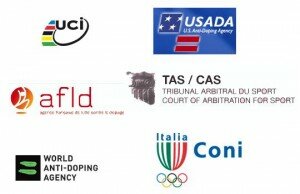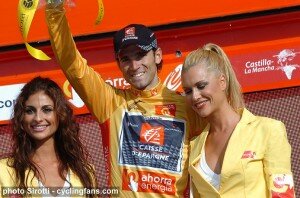
In June 2013, current UCI President Brian Cookson released his manifesto which ultimately succeeded in helping him get elected at the UCI congress later that year.
In that manifesto in the section entitled ‘Overhaul the structure of elite road cycling’ Cookson wrote the following:
“The structure of elite cycling needs to provide a clear and compelling narrative that is easy for spectators, sponsors and broadcasters to follow. “
In its context, Cookson was writing specifically about the organisation of events throughout the year into a cohesive and coherent calendar. But if we cherry-pick a phrase from that campaign pledge, that cycling needs to be easy for spectators to follow, this is in rather stark conflict with the news which has been emerging from various UCI teams over the last few weeks.
As it is the beginning of a new season, existing teams and brand new teams have gradually been releasing photos of their new team kit for the year. It has been incredibly noticeable that there is going to be one dominant colour in the peloton this year – black.
When two football teams play each other, there are rules in place to ensure that the jerseys of the opposing teams do not clash. This is to ensure that the players and the fans can distinguish between the two teams – simple and obvious. When a non-football fan flicks on a match and doesn’t know which teams are actually playing, it is still obvious that there are two separate groups of players.
Cycling is a more complicated case because there can be upwards of 20 different teams competing at once rather than just two, but there are similar rules in place in the UCI’s regulations.
Rule 1.3.035 states:
‘Each team may use different clothing for one full event each year. The clothing must be submitted for approval to the President of the UCI WorldTour for UCI ProTeams, or the President of the Road Commission for other UCI-registered teams, at least 21 days before the event in question. The application may be rejected for reasons considered valid for the case in question, in particular any similarity to the clothing of another team.’
The rule might exist, but as so often with UCI rules, it doesn’t appear to ever be enforced as team after team release similar kits for 2015.
There is another rule relating to rider apparel pertaining to rain jackets. Rule 1.3.030 states:
‘Rain capes must be transparent or made to look like the jersey’
It doesn’t state in the UCI’s official documents on their website what the reasons are for this rule, but in a letter distributed to teams by the UCI, their reasoning was stated as follows:
‘Riders should be able to identify their rivals at all times during a race in order to respect absolute equity and regularity between athletes.
Commissaires must also be able to recognise the riders in order to make appropriate decisions regarding the sporting management of the event.
TV directors and commentators can find it very difficult to identify riders; this is harmful to the image of professional cycling for spectators and fans who are following the race live.’
If the UCI recognises that generic rain capes can cause serious problems for riders, commissaires, TV directors, commentators, spectators and fans, why is the same logic not extended to the jerseys themselves?
The rules state that the person responsible for approving or disapproving kit design is the ‘President of the UCI WorldTour for UCI ProTeams’. A check on the UCI website of the various roles assigned to the members of the UCI Management Committee reveals that currently nobody has been officially assigned to this position. So is it any wonder that so many professional teams next year will be in dark kit?
It’s hard enough to explain to those new to the sport what is going on in races as it is, without all the riders looking alike. That helmets are now compulsory and many riders choose to wear sunglasses while riding makes it all the more difficult to determine rider identities. The commentators on 2015 races will certainly have an unenviable job of picking apart who is who.
If experts are going to struggle, what chance does the new fan have in trying to ‘engage’ with the ‘product’?
We saw with the recent Astana case of whether the team should be issued a WorldTour license or not that the UCI were hamstrung by their current set of rules and ultimately had little chance but to award them a license.
Here is a much simpler case, where rules actually already exist to take action. The colours of team jerseys may seem like a trivial matter when compared to doping, but a more generic looking peloton is also harming the image of the sport and dissuading potential viewers from immersing themselves in cycling.
The rules are there. Why are the UCI not utilising them?
In 2003, Manchester United defender Rio Ferdinand failed to appear for an out of competition drugs test and received a global ban of 8 months and a £50,000 fine. In 2001, Lazio player Jaap Stam tested positive for the steroid nandrolone and was banned for 4 months. Last month, basketball player Rashard Lewis of Orlando Magic in the NBA was found to have abnormal levels of testosterone in his blood and he was banned for a laughable 2 weeks. In cycling, any of these misdemeanors leads to a 2 year ban from the sport. In addition to the ban, the rider must then deal with trying to return the sport. When the suspension has been served, the rider is not welcomed back easily to the peloton. He is now a former doper, a disgrace. It is not easy to find a new team, and if the rider does succeed in finding a team, he faces into a career of trying to convince the fans and the media that he can be considered a credible rider again. So are the UCI and cycling as a sport in general doing enough to rid the sport of the cancer that is doping? The answer is yes and no. Yes, they are actively doing more than any other sport to eradicate the cheats. No, cycling is an embarrassing melee of organisations who have been doing more harm than good in the last few years.

Just some of the many, many authorities who attempt to control doping within cycling.
The only other major sport that matches the 2 year ban that the UCI imposes on dopers is Athletics. The disincentive for cyclists to dope is even more severe the second time around with a lifetime ban for a second offence. The head of the UCI Pat McQuaid even tried to get riders to agree to paying a fine of a year’s salary along with the 2 year ban, if caught (to put that into perspective, Ferdinand’s fine wasn’t even a week’s wages). The punishment for the equivalent crimes in other sports is insufficient and in some cases pathetic. Of course it’s true that cycling has seen a vast amount of convicted dopers since 1998 and the Festina team when the first major ‘doping affair’ was exposed. But currently, are other sports doing enough as cycling to expose the cheats? It wasn’t only the names of cyclists that were documented in Operacion Puerto.
It seems to me that the anti-doping authorities are under pressure from the UCI to catch the dopers, as they should be, but are they under too much pressure? If a Tour de France goes by without any positive dope tests, should we automatically be suspicious that the anti-doping procedures are flawed or the agencies aren’t doing their job properly? There’s always doping in the Tour de France isn’t there?! There are four outcomes when a rider is subjected to a dope test, which are outlined in the following table:
There have obviously been plenty of good positives in the last few years, which is good, but leaving aside the riders that do dope, in my opinion there have also been plenty of false positives which is a problem with the testing procedures, not with the riders. How can there be so many riders ‘caught doping’ that so adamantly proclaim their innocence. Floyd Landis, Stefan Schumacher, Davide Rebellin, Mikel Astarloza, Gabriele Bosisio, Ivan Basso, to name but a few. I’m not saying all convicted dopers are probably innocent, not at all, what I’m saying is that some of them could be. Having recently watched the classic film 12 Angry Men, I’ve come to appreciate more the idea of ‘beyond reasonable doubt’. Can anti-doping authorities honestly claim that all the riders they have been responsible for banning from the sport are absolutely certainly guilty? I’m not so sure. I’m under the impression that the UCI need to be seen to be ‘doing something about doping’ and innocent parties have borne the brunt.

Alejandro Valverde won the 2009 Vuelta a Espana despite currently serving a doping ban in Italy.
The doping authorities announce vague details of riders who may have doped, they also announce when a rider’s ‘A’ sample has tested positive, before the rider has a chance to request a ‘B’ sample test. Doping is a problem in cycling and as such the appropriate authorities need to be equipped to deal with it. But they are not equipped to deal with it. I’ve looked at the UCI’s anti-doping document, it is full of blurry details. For instance, Article 213 states that ‘The analysis of the ‘B’ sample shall take place within 7 working days following notification by the laboratory of the ‘A’ sample finding to the UCI’, but later in the same article it states ‘If the ‘B’ analysis is not performed within this time frame this shall not be considered as a deviation from procedure’. So, a procedure is outlined but then a disclaimer is inserted stating that not following procedure does not constitute not following procedure. The document is full of similar disclaimers. Another article outlines that ‘the analysis of the ‘B’ sample shall be conducted by the laboratory that conducted the analysis of the ‘A’ sample’. Surely, the idea of a ‘B’ sample is to completely re-test the sample and not subject it to the exact same potentially erroneous testing procedure. Surely a second lab should be required to confirm the condemnation and public humiliation of a man.
What we have are anti-doping authorities with varying standards and inconsistent procedures, something which has led to the farcical situation of allowing a convicted doper, currently serving a doping ban, to race in and win the recent Vuelta a Espana. The UCI need to improve communications between all the various anti-doping authorities and sort out all the bureaucratic bullshit which has the potential to harm the sport even more so than the dopers themselves.
The doping non-stories need to stop. In the past week alone there has been information released by the AFLD about 40 riders who may have doped but it turns out they didn’t and Astana receiving preferential treatment when it came to doping controls at the Tour but it turns out they didn’t. This is not news and serves no purpose only to steal precious column inches from what matters, the racing. The stories should be written when a rider has undeniably tested positive for a banned substance. But until then, let’s not engage in pointless speculation, because I for one, am sick of mainstream media only turning their attention to cycling when there’s a potential doping story and not when there’s racing to be reported.